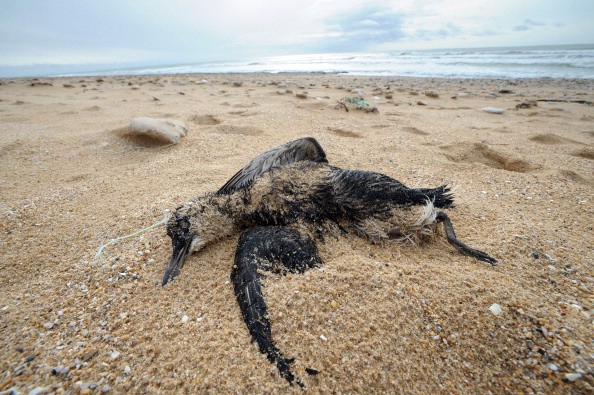Cyclones whipping up "washing machine" waves could have caused the starvation and death of thousands of seabirds that wash up on Atlantic coasts yearly, a new study says. Experts warn that the event could worsen with climate change.

Death of Seabirds
Auks, puffins, and guillemots which are hardy small birds that usually nest in the Arctic move to the south yearly to islands that are more favorable but isolated off Iceland, Newfoundland, or Norway.
But most of them are found washed up on beaches in a very large number, making scientists believe the occurrence is caused by intense winter cyclones that stop them from feeding.
David Gremillet of an institute called French CNRS research institute which coordinated the study published Tuesday in Current Biology said: "Imagine winds blowing at 120 kilometres per hour (75 mph), waves 8 metres high (26 ft) and turbulence in the water that disturbs plankton and schools of fish the birds feed on."
He told AFP that the birds are caught in a big washing machine.
The birds were not able to fly clear of the storms and some last for days, there is a chance they cannot go into the sea to get food or maybe they are unable to locate their prey due to the troubled waters.
Tracking the Birds' Winter Migration
With little stored body fat, an auk can pass away if it stays 48 hours without food. Scientists had a suspicion that storms were accountable for killing the birds, Gremillet said.
He said: "But what we didn't know was where and how."
An international research team chose to track birds from 39 dissimilar colonies in the North Atlantic in order to get answers. Concentrating on five species, they installed global location sensors on over 1,500 auks, seagulls, puffins, and two types of guillemots.
Attached to the feet of the birds at their various summer nesting area, the sensors was able to track the animals' winter migration.
By viewing bird movement data worth of about a decade and collating it to winter weather patterns researchers were successful in determining the region the birds ran into cyclones.

The Discovery
They made use of models to roughly calculate the amount of energy the birds used to fly through the storms and excluded cold or tiredness as the killers.
So Gremillet said the most possible explanation is "that the weather conditions are so horrible that the birds are not able to feed".
In 2014 when tens of thousands of lifeless guillemots and puffins washed up on French shores, their bodies were skinny said University of Montpellier's Manon Clairbaux who is the main author of the study.
Since the 1970s, populations of these birds all over the world have dropped by half because of competition with fishermen, pollution, habitat loss, and unexpected capture among the major threats.
For more news, updates about seabirds and similar topics don't forget to follow Nature World News!
© 2025 NatureWorldNews.com All rights reserved. Do not reproduce without permission.





